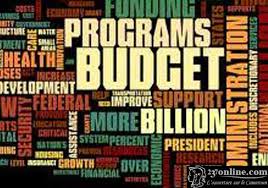2015 State Budget: Consolidating Investments in Priority Sectors
By Godlove BAINKONG, Cameroon Tibune, 26-11-2014
 PM Philemon Yang on November 25, 2014 presented the strategies in
government’s economic, financial, social, and cultural programme for the
next fiscal year.
PM Philemon Yang on November 25, 2014 presented the strategies in
government’s economic, financial, social, and cultural programme for the
next fiscal year.
2015 will mark the end of the first period of the triennial
results-based programme budget begun in 2013. The government of Cameroon
is putting performance strategies in place to use the FCFA 3,746.6
billion proposed State budget
for next year to consolidate investments
in priority sectors of the economy. Presenting the 2015 government’s
economic, financial, social and cultural programme for the next fiscal
year at the National Assembly yesterday November 25, Prime Minister,
Philemon Yang, said nothing will be left to chance to attain objectives
set during the start of the three-year programme budget.
The 2015 Budget
The
FCFA 3,746.6 billion 2015 State budget represents an increase of FCFA
434.6 billion in absolute terms and 13.12 % in relative terms from that
of 2014 which is FCFA 3,312 billion. The increase, Mr. Yang said, is
based on government’s anticipated 6.3 per cent Gross Domestic Product
(economic growth rate) in 2015 up from 5.8 per cent in 2014. This is
coupled with expected net increase in budgetary resources with the
coming into force of the Law of 18 April 2013 laying down private
investment incentives in Cameroon.
Sources of Income
As
usual, 2015 will fetch its funds from internal and external sources.
Internal resources stand at FCFA 3,342 billion 48 million, against FCFA
2,983 billion in 2014. The Head of Government said the money will
come from oil royalties expected to mobilize FCFA 774.9 billion as
against FCFA 733 billion in 2014, non-oil revenue to bring in FCFA
2,247.58 billion as against FCFA 1,970 billion in 2014. The State is also expected to issue bonds in 2015 amounting to FCFA 320 billion up
from FCFA 280 billion in 2014. Meanwhile, external resources evaluated
at FCFA 404 billion 117 million as against FCFA 329 billion in 2014,
will be furnished by loans (FCFA 345 billion 917 million against FCFA 274 billion in 2014) and grants (FCFA 58 billion 200 million up from FCFA 55 billion in 2014).
Priority Areas
With an
increase in the Public Investment Budget (PIB) from FCFA 1,000 billion
in 2014 to FCFA 1,150 billion in 2015, PM Yang noted that growth-induced
sectors will be targeted to give the Head of State’s emergence
programme a significant boost. Infrastructure development, the Prime
Minister said, will receive special attention notably with goal to
qualitatively and quantitatively improve the national road network so
that they comply with relevant technical specifications as well as
completion of studies on others. The construction of the first section
of the Douala-Yaounde motorway; the actual start of works on the
Kribi-Edea motorway, the first phase of which is the Lolabé-Kribi town
section and the continuation of construction works on the second bridge
over the Wouri, the PM said, will be upheld. Construction works will be
pursued on giant energy projects like Lom-Pangar, Mekin and Memve’ele.
Meanwhile, in the basic education sector, government intends to recruit
some 3,060 new general education teachers to reduce the number of PTA
teachers in government primary schools and equip 50 literacy centres as
well as build 40 new staff residential houses.
The
Head of Government while praying all stakeholders to put hands on deck
for an optimal execution of the budget for the good of all noted that
“the development of a nation is not rigid; it requires common effort,
effectiveness, efficiency, but mostly a radical change in behaviour and
mentality.”
What Balance Sheet For 2014?
In
2014, government, the PM said, created 89,993 temporary or seasonal jobs
and supervised 42,675 apprentices in vocational training centres.
Research allowance, he disclosed, were paid to University lecturers
amounting to FCFA 9.6 billion as well as excellence premium granted by
the Head of State to the best students in Cameroon universities
amounting to FCFA 4.5 billion. Other achievements included the
electrification of 143 villages and connection of 25,000 households
through the extension of the North and South interconnected networks,
electrification of 87 new localities across the ten regions as well as
the completion of 2,000 connections to households in 33 villages in the
North, North West, Centre and South West regions.
Commentaires
Enregistrer un commentaire